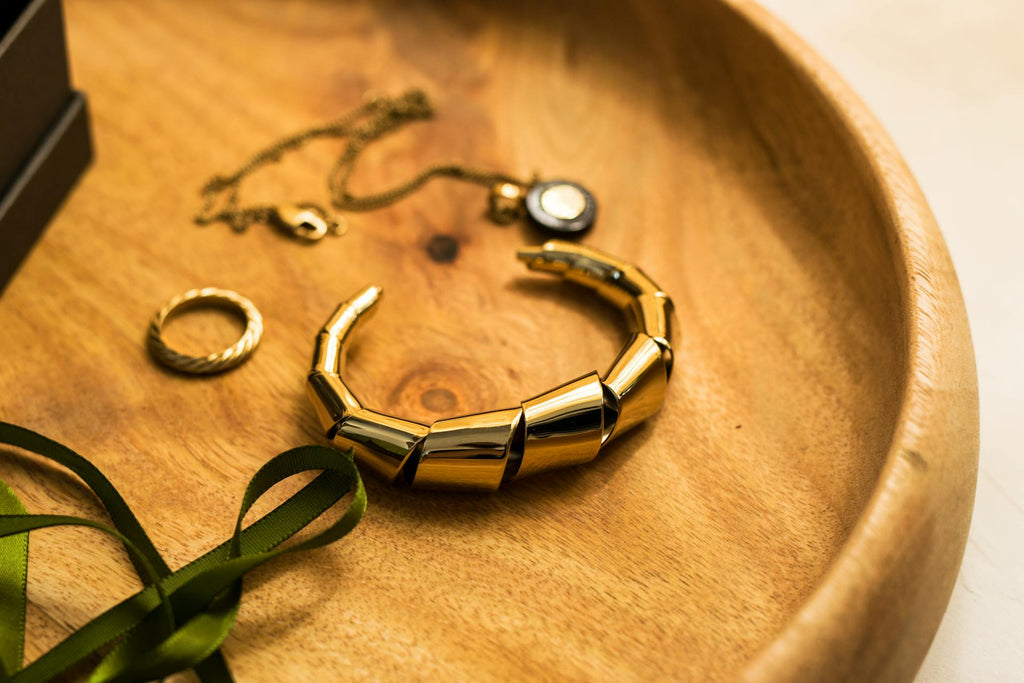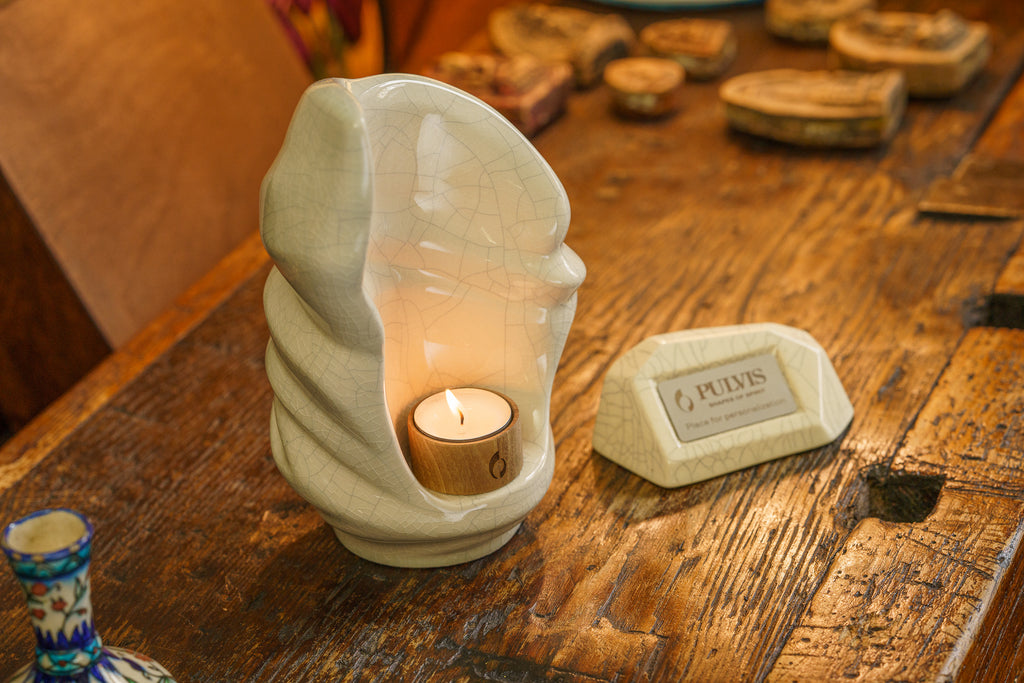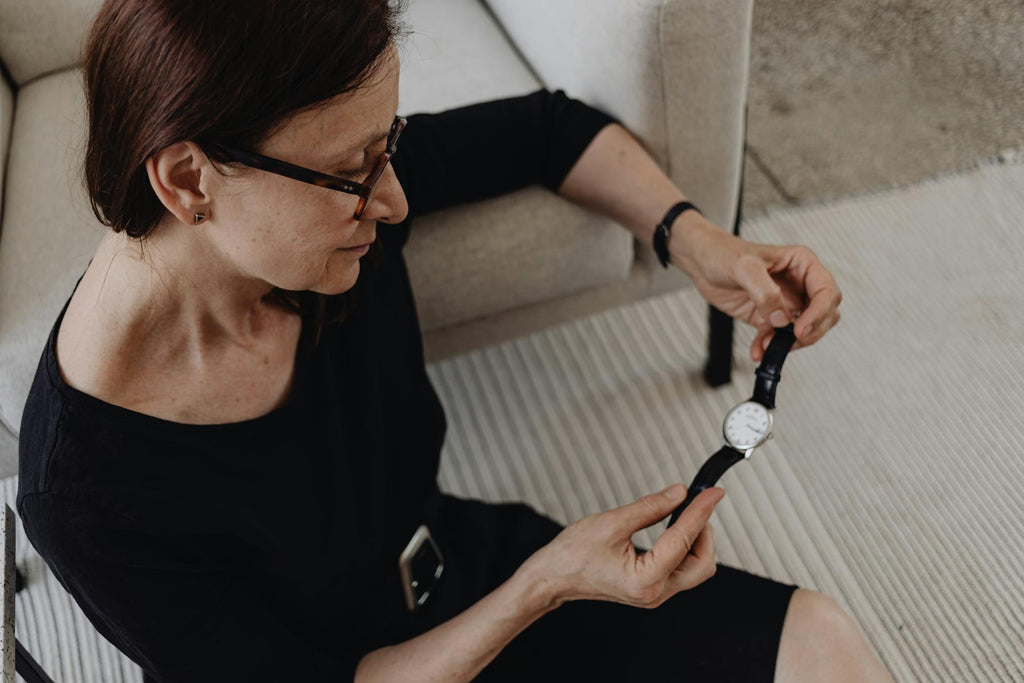

Gold - 1,947 degrees Fahrenheit
Titanium: 3,034 degrees Fahrenheit
Steel: 2,500 degrees Fahrenheit
Amalgam (mercury, silver, tin, copper, etc.): Varied
As you can tell, most metals found in the human body would survive the cremation process intact.
During cremation, metals such as gold, silver, platinum, and stainless steel generally withstand the high temperatures without being significantly affected. These metals have high melting points well above the temperatures typically reached during cremation, which can exceed 1400°C (2550°F). As a result, jewelry made of these metals may experience minimal changes in appearance, such as discoloration or oxidation, but they typically remain intact.
However, it's essential to consider the specific conditions of the cremation process, as variations in temperature and duration can influence the extent of any potential effects on the metals. Additionally, extremely high temperatures or prolonged exposure to heat could theoretically cause some deformation or distortion, especially in thinner or more delicate pieces of jewellery.
During cremation, metals may reach temperatures close to or exceeding their melting points, causing them to melt or become partially molten.
Even if metals do not melt entirely, they can still deform under the intense heat of cremation. Thinner or more delicate pieces of jewellery may warp, bend, or lose their original shape due to exposure to high temperatures. The high temperatures and presence of oxygen during cremation can lead to oxidation, especially for metals like silver and stainless steel. Oxidation can cause discoloration or tarnishing of the metal, altering its appearance. Depending on the composition and structure of the metal, cremation heat may cause changes in the metal's crystalline structure or properties. These changes may affect the metal's hardness, strength, or other characteristics. Overall, metal jewellery undergoes significant changes during cremation, including melting, deformation, oxidation, and potential structural alterations. The extent of these changes depends on factors such as the type of metal, the specific conditions of the cremation process, and the original design and quality of the jewellery.

Gemstone jewellery, unlike metal jewellery, is more susceptible to damage during cremation due to the extreme heat involved. The intense heat of cremation, which can exceed 1400°C (2550°F), can cause significant damage to many types of gemstones. Most gemstones have lower melting points than metals and can't withstand such high temperatures.During cremation, the sudden heating and cooling cycles can cause these gemstones to crack or break apart. Me gemstones may undergo changes in colour or appearance when exposed to high temperatures. For example, heat-treated gemstones or those with colour-enhancing treatments may experience further alteration or fading during cremation. Weakened or melted settings may result in gemstones becoming loose or falling out entirely. In some cases, particularly with more durable gemstones like diamonds or sapphires, small fragments or remnants may survive the cremation process relatively intact. However, the jewellery as a whole is likely to be severely damaged.

Gold has a high melting point, around 1,948 degrees Fahrenheit (1,064 degrees Celsius).Gold jewellery can withstand the temperatures reached in a cremation chamber, which typically range from 1,400 to 1,800 degrees Fahrenheit (760 to 982 degrees Celsius). As a result, gold jewellery is unlikely to melt or deform significantly during cremation. While gold jewellery may not melt or deform under the high temperatures of cremation, it can still undergo changes in appearance. The extreme heat may cause the gold to discolour or develop a darker patina due to oxidation. Additionally, any gemstones set in the gold jewellery may sustain damage or discoloration depending on their composition. After the cremation process is complete, any gold jewellery remaining will be separated from the cremated remains using a magnet or other means. Gold is non-magnetic, so it can be easily collected from the cremated remains. The gold residue is typically recycled or disposed of according to the crematorium's procedures.In some cases, families may have the option to request the recovery of any identifiable gold fragments from the cremated remains. These fragments can then be returned to the family or handled according to their wishes. Overall, gold jewellery is relatively resistant to the high temperatures of cremation and is unlikely to melt or deform significantly during the process. However, it may undergo changes in appearance due to oxidation, and any gemstones set in the gold may sustain damage. If gold jewellery holds sentimental or monetary value, it's generally recommended to remove it from the deceased before cremation to prevent potential damage or loss.

Cremation with jewelry, also known as cremation jewelry, refers to the practice of including jewelry worn by the deceased during the cremation process. While crematorium practices and regulations vary, here are some key points regarding cremation with jewelry:
1. Permission and Consent: In most cases, crematoriums require explicit permission from the family or legal representative to cremate the deceased with any jewelry. This is to ensure that the family is aware of the potential risks and consequences, as well as to respect the wishes of the deceased regarding their personal belongings.
2. Considerations for Jewellery: Certain types of jewellery, such as those made of precious metals like gold or platinum, can withstand the high temperatures of cremation without significant damage. However, jewellery containing gemstones or other materials may be more susceptible to heat damage or alteration during the cremation process.
3. Potential Risks: Cremating jewellery with the deceased carries certain risks, including damage to the jewellery itself and the potential for contamination of the cremation chamber. For example, gemstones may shatter or sustain damage under the intense heat, and metal jewellery may release toxic substances if it contains materials like lead or cadmium.
4. Safety Precautions: To mitigate risks associated with cremating jewellery, some crematoriums may have specific guidelines or procedures in place. This may include inspecting jewellery for hazardous materials, removing certain types of jewellery before cremation, or using protective measures to prevent contamination of the cremation chamber.
5. Family Preferences: Ultimately, the decision to cremate with jewellery should be made in consultation with the family or legal representative of the deceased. Some families may find comfort in knowing that their loved one is cremated with cherished jewellery, while others may prefer to remove the jewellery beforehand to preserve it as a keepsake.
It's important for families to communicate their preferences and concerns regarding cremation with jewellery with the funeral home or crematorium staff. By working together, families and funeral professionals can ensure that the wishes of the deceased are respected while also prioritizing safety and adherence to regulations.
Preserving a loved one's jewellery after their loss can be a meaningful and comforting way to cherish their memory. Pulvis Art Urns designed and created a unique range of memorial accessories - a great addition to our premium handmade urns and keepsakes. Surround your memorial urn or keepsake with beautiful accessories, such a candleholders and memorial photo frames .
Made out of high-quality genuine walnut from sustainable forestry, this wooden ring cone is a unique solution when in comes to keeping a precious items near an urn.

By creating a memorial candle that incorporates your loved one's jewellery, you can create a lasting tribute that not only preserves their precious belongings but also serves as a meaningful reminder of their presence and the love you shared.
Memorial nameplate holders serve as a dignified and respectful way to commemorate and honour the memory of loved ones who have passed away. They provide a dedicated space to display the name, dates of birth and death, and sometimes a brief message or inscription about the person being remembered. By displaying a nameplate holder, families and communities show respect and reverence for the deceased. It signifies that the individual is remembered and valued, not forgotten.

Connection and Remembrance: Jewellery often carries memories and emotional significance. Items such as wedding rings, family heirlooms, or pieces gifted on special occasions can serve as tangible connections to the deceased loved one.
Legacy and Continuity: Passing down jewellery from one generation to the next is a way to preserve family history and legacy. When a loved one dies, inheriting their jewellery can be a way to honour their memory and carry forward a piece of their story.
Symbolism and Ritual : Wearing or displaying these items during mourning rituals or memorial services can be a way to honour the deceased and participate in cultural or religious customs.
Keepsakes and Mementos : These items serve as tangible reminders of the person and the moments shared with them, providing comfort and solace during the grieving process.
Identity and Connection : For some individuals, wearing a loved one's jewellery can feel like a way to carry a piece of them wherever they go. It can serve as a source of strength and a reminder of the bond shared with the deceased.
Ultimately, the importance of jewellery when a loved one dies varies from person to person and depends on the significance of the items involved. For many, these pieces hold immense emotional value and serve as cherished symbols of love, connection, and memory.

Join us in helping families honor the memory of their loved ones and pets through art!
Our Affiliate Program is now available at https://www.pulvisurns.com/pages/affiliate-program-by-pulvis-art-urns
Understanding the Modern Cremation Process
Direct cremation constitutes the most basic form of cremation service. The decedent is transferred to the crematory shortly after death without embalming, public visitation, or the use of a ceremonial or rental casket. Upon completion of all legally required authorizations and permits, generally within several business days the cremation is performed
5 Reasons Handmade Ceramic Cremation Urns Outperform Mass-Produced Alternatives
Handmade ceramic urns provide a unique, lasting tribute for loved ones and pets, blending artistry, personalization, and emotional meaning that mass-produced urns can’t match.
Ceramic Memorial Urns That Serve Both Humans & Pets
Dual-use cremation urns are becoming a meaningful way for families to honor the bond between a loved one and a beloved pet. Crafted in ceramic, these unified memorials symbolize shared life, simplify the memorial space, and offer personalized options like engraving and custom finishes. They provide a lasting, heartfelt tribute that keeps two connected souls together.
Dog Urns: How to Choose the Right Material & Finish
Material Deep Dive: Ceramic, Bronze, Wood. Which Urn Material Wins?
Share:
Letting Go with Love: A Guide to Deciding the Fate of a Loved One's Belongings
A Comprehensive Guide to Choosing the Right Pet Cremation Urn